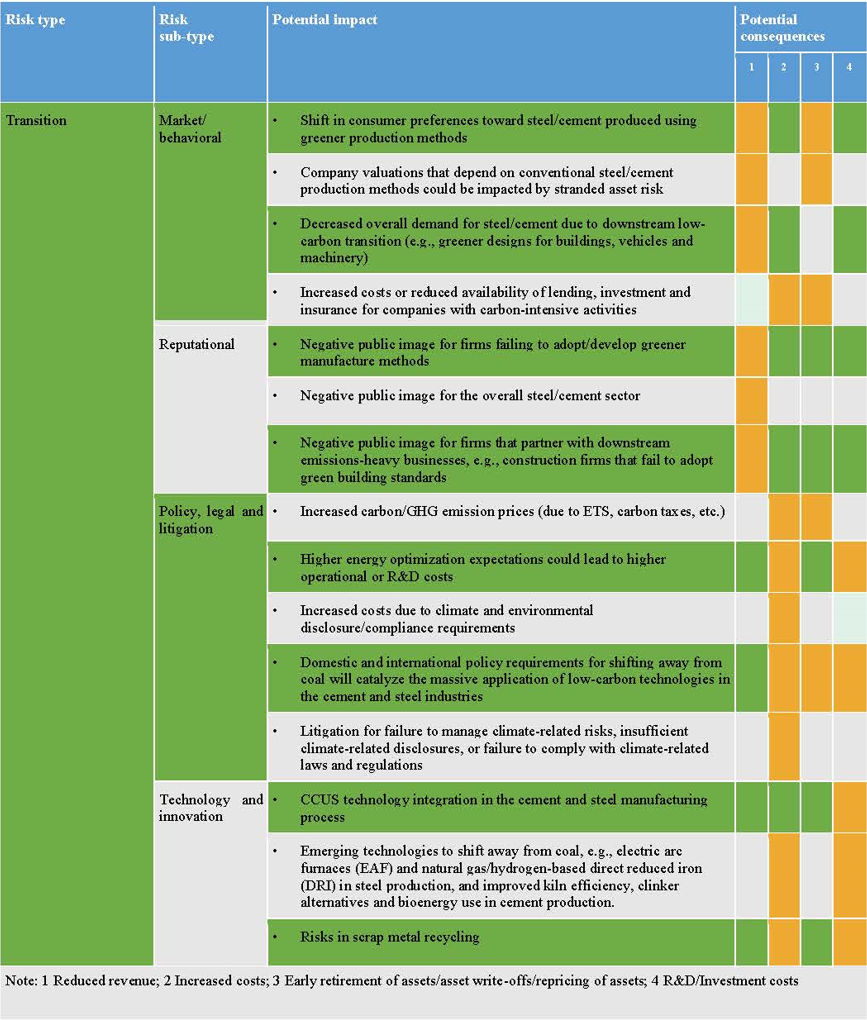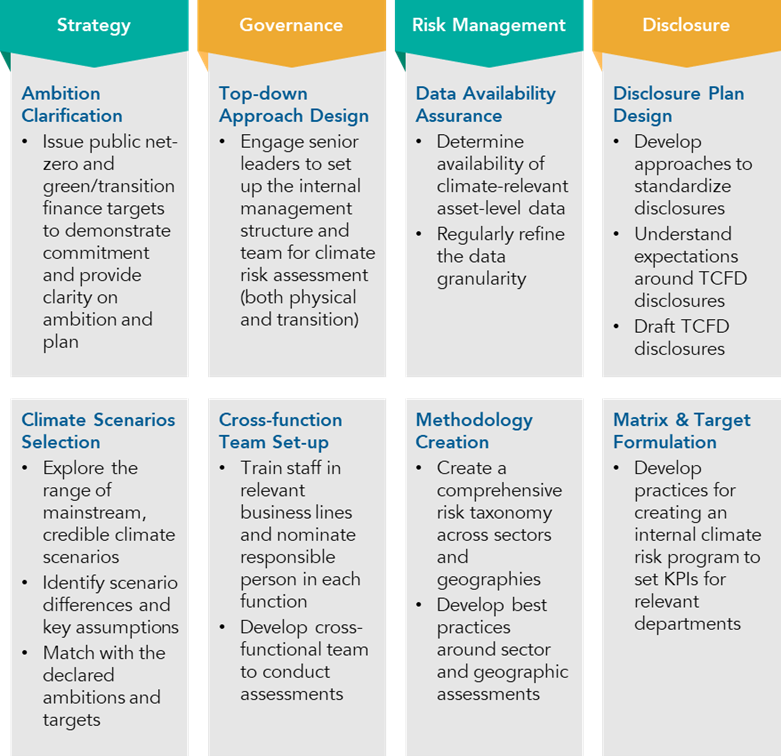Transition Risks and Opportunities with a Focus on the Belt and Road
The Paper was a collective effort of the GIP Working Group on Environmental and Climate Risk Assessment co-chaired by the ICBC and the Swiss Re, with PwC serving as secretary. The working group delivered this report to raise awareness, disseminate best practices and advocate for robust fit-for-purpose frameworks among financial institutions and other stakeholders facing transition risks, and to scale up investment and promote risk transfer solutions for green and low-carbon activities, especially in regions and countries along the Belt and Road.
Against the backdrop of global actions in coping with climate change, transition finance plays an important role in supporting the carbon intensive sectors to embark on a green and low-carbon trajectory. According to the 2022 Annual Report of Boao Forum for Asia, 136 countries, 115 regions, 235 major cities and 682 of the 2,000 top companies around the world had set carbon neutrality goals, covering 88% of global greenhouse gas emissions, 90% of the world's economy and 85% of the world's population[1]. Achieving carbon neutrality goals will require a thoughtfully planned decarbonization roadmap to ensure an orderly transition. In order to be better prepared for a low-carbon world, businesses, both in the financial sector and the real economy, need to integrate transition risks into their business strategy and risk management practices, manage risks and create business opportunities to promote an early and orderly transition.
To map out transition risks and opportunities for financial institutions investing in countries and regions along the Belt and Road, this paper conducted case studies on selected economies, including China, Kazakhstan, Poland and Pakistan. These countries were at different levels of economic development and each faced a unique set of decarbonization challenges, but they all recognized the urgency and necessity of rapidly reducing the fossil fuel consumption and facilitating the comprehensive low-carbon transition. The essential transition risks these countries faced often include heavy reliance on fossil fuels, a lack of green investment and public-private synergy, potential long-term policy inconsistency, uncertainty of technology development, international reputation damage if target setting and implementation are perceived as insufficient, etc. On the other hand, there were numerous common or country-specific transition opportunities which could shed light on possible net-zero strategies for financial institutions and enterprises.
In addition, to understand the transition risks and opportunities in the private sector, the paper provided risk and opportunity analysis for five real economy sectors as well as for the financial sector. The five real economy sectors analyzed in the paper include energy sector, typical carbon-intensive industries (cement and steel), transportation sector, building sector, and agriculture, land & ocean use. The below table demonstrates the risk analysis for typical carbon-intensive industries in the paper.
Table 1: Risk analysis for typical carbon-intensive industries: cement and steel

As each country has its unique development and transition pathway, financial institutions must actively monitor the development of relevant policies, regulations and market conditions in the countries and regions where they have operations and/or exposure. To this end, this report proposed a four-pillar approach (Figure 1) for financial institutions to manage and control potential transition risks. The four pillars included formulating a clear strategy to support the transition of sectors in the real economy, designing appropriate governance mechanisms for top-down management oversight around climate-related risks and opportunities, risk management, and actively disclose current progress and future work plans based on a recognized disclosure framework.
Figure 1: The four-pillar approach to managing transition risks for financial institutions

Source: GIP Working Group 1 constructed based on the TCFD framework
The report can be viewed here: Transition_Risk_Paper.pdf.
[1] 2022 Annual Report of Boao Forum for Asia on Sustainable Development in Asia and the World, Boao Forum, March 2022, http://seatone.net.cn/uploads/tan/1001.pdf